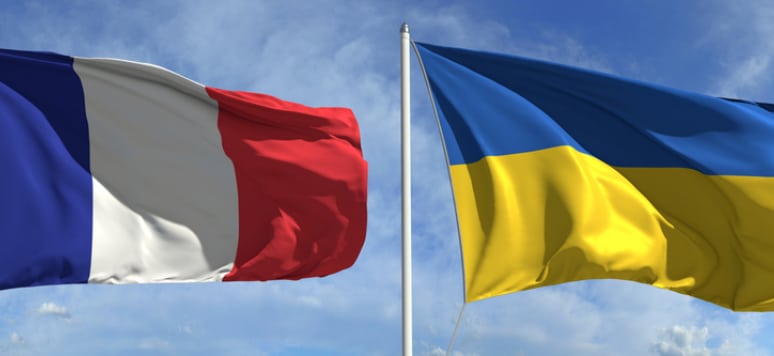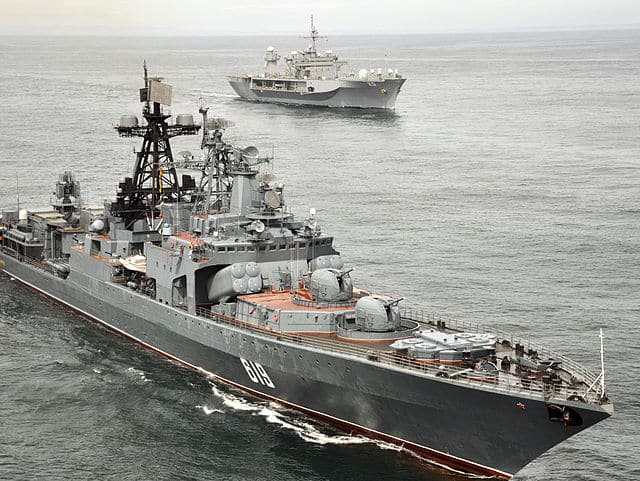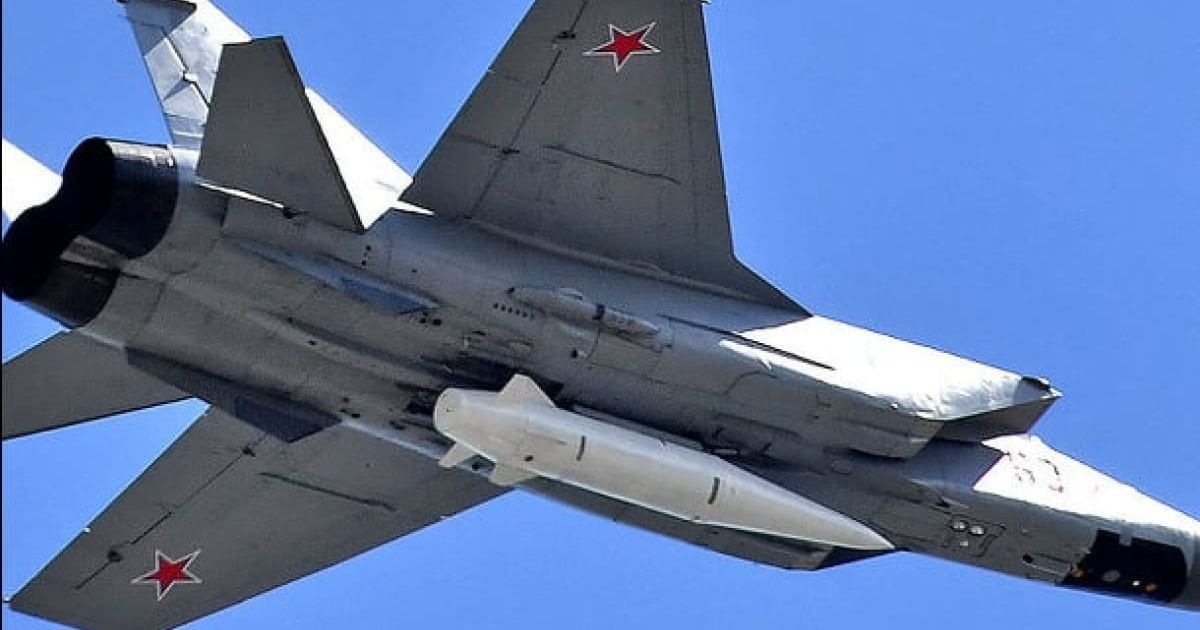The 180,000-strong Russian military group that invaded Ukraine on February 24, 2022, consisted of the most highly trained units equipped with the most modern weapons. Russia lost all of this but unpacked its almost bottomless stockpiles of military equipment. Spoiler: it will last for several more years.
To assess how much and what kind of weapons Russians still possess, Texty media outlet referred to the 2021 Military Balance data — the annual reviews of countries’ military capabilities by the International Institute for Strategic Studies. It provides the declared quantity of various models of military equipment by countries. Loss calculations are based on Oryx initiative data, and for comparison, Texty also provides information from the General Staff of the Ukrainian Armed Forces.
Oryx records only visually confirmed losses, meaning when there are photos or videos — clearly, these figures are several times lower than those published by the General Staff of the Ukrainian Armed Forces. The date of initial detection is recorded, not the actual loss.
Data on Russian artillery losses differ significantly, especially since photos and videos of counter-battery fire effects are rarely made public.
The USSR left behind huge reserves of equipment from various years — cannons and tanks from the 1940s and 1950s are still stored in Russia.
Texty has examined the main, but not all types of Russian military equipment. It’s worth considering that not all information is highlighted in the Military Balance reports, or at least part of the information is concealed.
Furthermore, Russia continues to manufacture, upgrade, and bring out old equipment from storage. Even considering that not all equipment can be restored and some parts are used for restoring others. And even with the same scale of destruction of Russian equipment, it will last for several more years of intensive combat operations.
“Protracted” war
In February 2022, the Ukrainian command applied the strategy of ‘protracted war’ against the enemy, which involved giving up territory in exchange for time and striking at logistics. The strategy proved successful, and Ukraine managed to destroy the modern Russian army. The final phase of this war was the Ukrainian counteroffensive in September 2022, particularly in the Kharkiv region, when Russian troops retreated so rapidly that the only hindrance to liberating more territory was the lack of fuel, which couldn’t be delivered to Ukraine’s frontline units in time. Russia’s substantial advantage in artillery helped save them from a complete defeat.
“Canned” reserves from storage
But Russia’s main advantage lies in its vast size and corresponding resources.
While Ukraine was replenishing its troops’ numbers and waiting for equipment from allies to continue the advance, Russia conducted a mobilization and retrieved old reserves from storage. It has sufficient facilities to refurbish the old equipment.
The first recorded losses of Russian “de-canned” tanks, the T-62, were in July 2022 — with one tank lost. However, in October and November, the numbers rose to 32 and 18 respectively, and the first destroyed T-54/55 tank was in June 2023. Information about Russia deploying T-54/55 tanks to the front emerged as early as 2022, though they were predominantly used as artillery from concealed firing positions.
The situation with artillery is analogous: according to Military Balance data, Russia had only 40 240mm self-propelled howitzers Tuylpan in active service and 390 units in storage. The first loss of this self-propelled howitzer was recorded in May 2022, but by November, such losses became systematic. The same trend is observed with towed artillery.
According to reports from Alexander Kovalenko, an expert from the Information Resistance group, Russia is capable of restoring up to 100 units of towed artillery per month. Starting from June 2022, Oryx documented the first confirmed loss of the D-20 howitzer, although according to Military Balance data, these howitzers were not in active service but only in storage. The same applies to the towed howitzer Giatsint-B — the first recorded losses are dated to September 2022.
However, lost D-30 howitzers have been recorded since March 2022, indicating that they were likely brought out from storage and put into active use.
Or, for example, the BMD-4 — the most modern combat vehicle for airborne troops. Russia had 289 of these vehicles in service with the airborne forces. Confirming the destruction of 70: in March-April 2022, 25 and 14 respectively. However, losses have been significantly lower since the summer of 2022 — only a few units per month. To what extent this statistic reflects the actual situation is unknown. Perhaps these losses simply have not been documented.
How much and what Russia has lost
Tanks
Overall, in 2021, Russia had nearly 18,000 tanks of various models. According to confirmed data, 1795 of them were destroyed, leaving 16,199 (of which 1635 were in active service and 14,564 were in storage).
For comparison, according to the data from the General Staff of the Ukrainian Armed Forces, a significantly higher number has been destroyed: 4,228 tanks (as of the end of July 2023). Logically, Ukraine has destroyed the highest number of units of the most mass-produced Russian tank — the T-72 and its variants. In the second place is the T-80, a more modern tank. Confirmed losses as of the end of July 2023: 527, and they are actively retrieving, restoring, and upgrading them from storage.
Russian troops are currently using T-54/55 tanks as artillery installations for firing from concealed positions. Perhaps these tanks are also stored somewhere.
In the Soviet Union and in Russia, there weren’t too many models of mass-produced tanks after the T-34: T-44, T-54/55, T-62, T-64, T-72, T-80, T-90. A new generation of tanks came out roughly every 10 years. The USSR actively participated in all the conflicts of the 20th century (or caused them), and against the backdrop of the Cold War, these tanks were produced in tens of thousands. However, they quickly became outdated — first, their electronics became obsolete, and then their armor.
Therefore, a system of tank modernization was initiated, using tank chassis for other military equipment. As a result, Russians have a whole “zoo” of domestic tanks with various additional letters: T-72A, T-80BVM, and so on.
These letters signify different modernization variants: from engine changes to the installation of reactive armor, thermal imaging systems, battle management systems, and more. Some modernizations were carried out on already modernized equipment. That’s why we have the T-80, then the T-80B, followed by the T-80BV, which was eventually modernized into the T-80BVM. The differences between the first and last modernizations could span decades.
See also: Russia managed to increase missile production several times despite Western sanctions
Information about the most common tank models possessed by Russia:
- T-72 — the main battle tank, developed in the USSR.
- T-80 — the main battle tank of the third generation, made in the USSR.
- T-90 — the main battle tank of the third generation.
- T-62 — soviet medium tank of the second generation.
- T-64 — the main battle tank produced in the USSR from 1963 to 1987.
In the Military Balance 2021 data, there is no information about T-62 and T-64 in the Russian army or in storage. However, they were mentioned in previous reports — for instance, as of 2017, there were 2,500 T-62 tanks and 2,000 T-64A/B tanks in storage.
Artillery systems
Russia has already lost approximately a quarter of the declared quantity of artillery systems. Nearly 5,000 units have been destroyed, according to the General Staff of the Ukrainian Armed Forces (as of August 3, 2023), leaving around 19,000 in various branches of the military. However, nearly 4,000 of these are systems manufactured during or before World War II (such as the M-1938 model from 1938). There are also nearly a thousand D-20 howitzers, which have long been in service and significantly worn.
Self-propelled artillery
According to data from the General Staff of the Ukrainian Armed Forces, around 5,000 Russian self-propelled artillery units of various types have been destroyed, but visual confirmation exists for only 373 of them (data on the graph).
Self-propelled artillery was developed in the period between the World Wars to support infantry during assault operations. However, it gradually replaced towed artillery due to its maneuverability and rapid deployment. Self-propelled artillery can commence firing almost instantly upon reaching their firing positions, accomplish their combat tasks, and depart from their positions before the enemy’s counter-battery fire begins.
Furthermore, self-propelled artillery units shield the crew from shrapnel and small arms fire. They are often equipped with loading systems or semi-automatic mechanisms that assist the military in firing.
Russian self-propelled artillery units have their towed counterparts (designated by the letter “B” in the name), while self-propelled artillery is denoted by the letter “S” in its index. For example, the Msta-S and Msta-B.
Russian artillery follows standard calibers of 152mm or 122mm. However, there are also other calibers such as 203mm, 240mm, 130mm, 120mm, and 82mm, mainly for automatic or self-propelled mortars.
Since February 2022, the highest number of destroyed Russian self-propelled artillery units in Ukraine were Msta-S systems, followed by Akatsiya. Nevertheless, confirming the destruction of artillery systems remains challenging: either they are abandoned systems left during retreat or their destruction is captured on UAV footage. The spikes in destruction in March-April correspond to the northern de-occupation, in September to the de-occupation of the Kharkiv region, and in November to the de-occupation of the right-bank part of the Kherson region.
The most common models of self-propelled artillery in the Russian army are:
- MSTA-S, 152 mm.
- Akatsiya, 152 mm.
- Giatsint-S, 152 mm.
- Gvozdika, 122 mm.
Towed artillery
Towed artillery is inexpensive but slow. It’s the most common type of artillery. Towed artillery consists only of a cannon and a gun carriage, and for firing, simple stabilization means are used such as legs, support plates, and the like. Some cannons are suspended, so they don’t touch the ground with their wheels during firing.
The main downside is the speed. Towed cannons require time for deployment and folding after completing a combat task. Moreover, the crew is unprotected, and such cannons are usually towed by cargo trucks that simultaneously transport ammunition, also unprotected.
The most common type of Russian towed artillery is the Msta-B — the only one that remained in service at the beginning of the full-scale invasion, according to Military Balance 2021 data. Other equipment systems were likely taken out of storage.
The D-30 howitzers with a caliber of 122 mm, were actively destroyed as early as March 2022, indicating that they were in “quick access” and participated in the initial wave. On the other hand, the first confirmed destructions of D-20 howitzers were only recorded from June 2022, and for Giatsint-B — from September.
The most widespread models of towed artillery in the Russian army:
- MSTA-B, 152 mm.
- Giatsint-B, 152 mm.
- D-20, 152 mm.
- D-30, 122 mm.
Armoured Fighting Vehicles and Armoured Personnel Carriers
Armoured Fighting Vehicles — AFV and Armoured Personnel Carriers — APC (by NATO) are used for delivering infantry to the frontlines, transporting artillery, carrying cargo, and evacuating the wounded. They are equipped with means of offense, such as large-caliber machine guns, but typically this equipment is lightly armored and not intended for active combat engagement.
This type of machinery is useful during urban movements. It can provide protection against shrapnel during artillery bombardments, but cannot withstand a direct hit.
The most common models of armored vehicles in service with the Russian army are:
- MT-LB — Soviet / Ukrainian amphibious armored personnel carrier.
- BTR-80 — armored wheeled amphibious combat vehicle.
- BTR-60.
- BTR-70.
- BRDM-2 — amphibious armoured scout car.
Infantry fighting vehicles
Military equipment of this type (classified as Infantry Fighting Vehicles — IFV by NATO) is used for direct participation in combat operations — delivering infantry as close as possible to enemy positions during assaults, evacuating the wounded, and delivering supplies to combat positions. This type of equipment also provides infantry support through its armament: large-caliber machine guns and small-caliber cannons, sometimes equipped with anti-tank weapons, smoke-screen devices, and more. In other words, this kind of machinery is used directly in combat and assaults. Such vehicles can be both wheeled and tracked.
The most common models of infantry fighting vehicles in service with the Russian army are:
- BMP-1.
- BMP-3.
- BMD-2.
- BMD-4M.
- TIGR/TIGR-M.
- BTR-82A(M).
- BMP-2.
Multiple rocket launchers
Multiple rocket launcher is designed for the “total” destruction of enemy positions. Thanks to its high firing rate, such a system, depending on the type and specific model, can execute a full salvo in a matter of tens of seconds.
The number of rocket launch tubes, depending on the caliber, can range from 12mm to 40mm. A drawback of multiple launch rocket systems is their slow reloading, and 300mm caliber systems cannot be manually reloaded without a separate transport loading vehicle. This leads to logistical complications. However, the execution time of a combat mission for multiple launch rocket systems does not exceed 5 minutes (depending on the type): 2 minutes for preparation, 1 minute for firing, and 2 minutes for leaving the combat position.
Russia employs three families of multiple launch rocket systems: Grad and its various upgrades: Tornado-G, Grad-1 — the calibers of these systems are 122mm; the Uragan family — caliber 220mm; the Smerch multiple rocket launch system — caliber 300mm.
The most common models of multiple rocket launch systems in the Russian army are:
- BM-21 Grad.
- BM-27 Uragan.
Russian aircraft and helicopters
The most common models of aircraft and helicopters in service with the Russian army are:
- Ka-52 Alligator.
- Su-24/25.
- Su-34.
Originally posted by Denys Hubashov on Texty.org.ua. Translated and edited by the UaPosition – Ukrainian news and analytics website
See also: Russia plans to create a new «elite» aviation group Storm with direct subordination to Moscow




